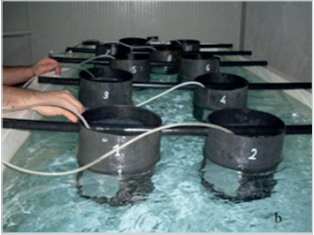In this study, it was aimed to determine certain spermatological properties of seabream in order to optimize the freezing protocol and to provide more economical and efficient production in seabream culture from the obtained results. In this study, 10 male and 4 female seabreams were selected. After certain spermatological characteristics were determined, the sperm samples were drawn into 0.25 mL straws following the addition of an appropriate cryoprotectant to the best diluent. Four different diluents (Mounib, saline Mounib, Ringer’s, and 1% NaCl) were used to freeze the sperm (Experiment 1). In this experiment, Ringer’s solution afforded the highest motility. Then, 10% dimethyl sulfoxide (DMSO), 10% ethylene glycol (EG), and 10% dimethyl acetamide (DMA) were added to the Ringer’s diluent to determine the most suitable cryoprotectant (Experiment 2). DMSO afforded the highest motility. Following the freezing of sperm, 2 methods were attempted for thawing: 20 s at 26°C and 15 s at 35°C (Experiment 3). Post-thaw motility values of 69.37% and 67.55%, respectively, were obtained. At the end of this study, the hatching rate was 43.48% for frozen sperm. Finally, the best diluent, best cryoprotectant, and optimum thawing temperature and fertility rates for the freezing of seabream sperm were found.
Cite this article as: Özgöray, E.D., Akçay, E., 2020. Freezing Protocol Optimization for Gilthead Seabream Sperm, Sparus Aurata L. Acta Vet Eurasia 2020; 46: 54-62.





.png)
